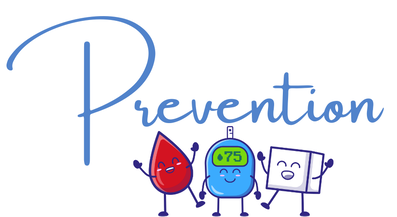
Type 1 diabetes, once referred to as juvenile diabetes or insulin-dependent diabetes, is a chronic condition where the pancreas produces little or no insulin. Insulin is a hormone that enables glucose to enter cells to create energy.
The onset of type 1 diabetes can be triggered by various factors, such as genetics and certain viruses. While it typically presents itself during childhood or adolescence, adults can also develop type 1 diabetes.
Symptoms
Type 1 diabetes symptoms can appear suddenly and may include:
- Increased thirst
- Frequent urination
- Bed-wetting among children who have never wet the bed before
- Heightened hunger
- Unintentional weight loss
- Mood swings or irritability
- Fatigue or weakness
- Blurry vision
Causes
Type 1 Diabetes: Possible Causes
Although the exact cause is unknown, it is believed that the body's immune system, which typically fights harmful bacteria and viruses, destroys the insulin-producing (islet) cells in the pancreas. Additionally, genetics and exposure to viruses and other environmental factors have been identified as potential causes.
Although the exact cause is unknown, it is believed that the body's immune system, which typically fights harmful bacteria and viruses, destroys the insulin-producing (islet) cells in the pancreas. Additionally, genetics and exposure to viruses and other environmental factors have been identified as potential causes.
Risks and complications
Let's talk risks. Here are some factors that might up your chances of getting type 1 diabetes:
Potential Complications of Type 1 Diabetes
Type 1 diabetes can be a real troublemaker, stirring up a host of health issues. For starters, it can hike up the odds of heart problems, like angina, heart attack, and high blood pressure. It could also damage nerves, which causes tingling, numbness, or pain, especially in the legs or feet. And, if that weren't enough, it could wreak havoc on the digestive system, causing nausea, vomiting, or diarrhea. Gentlemen might even experience erectile dysfunction. The kidneys can also feel the burn, with diabetes potentially causing kidney failure. Even the eyes aren't safe, with diabetic retinopathy increasing the risk of blindness. And it's not just internal organs that are affected; diabetes can also cause skin, mouth, and foot infections. Pregnant folks with diabetes face even more risks, such as stillbirth and birth defects.
- Family history.
- Genetics.
- Geography.
- Age.
Potential Complications of Type 1 Diabetes
Type 1 diabetes can be a real troublemaker, stirring up a host of health issues. For starters, it can hike up the odds of heart problems, like angina, heart attack, and high blood pressure. It could also damage nerves, which causes tingling, numbness, or pain, especially in the legs or feet. And, if that weren't enough, it could wreak havoc on the digestive system, causing nausea, vomiting, or diarrhea. Gentlemen might even experience erectile dysfunction. The kidneys can also feel the burn, with diabetes potentially causing kidney failure. Even the eyes aren't safe, with diabetic retinopathy increasing the risk of blindness. And it's not just internal organs that are affected; diabetes can also cause skin, mouth, and foot infections. Pregnant folks with diabetes face even more risks, such as stillbirth and birth defects.
|
|
Insulin is the superstar hormone produced by the pancreas, a gland located behind and below your tummy. Insulin zips through your bod, unlocking cells and letting in sugar. As this sweet stuff flows in, insulin steps in to lower your blood sugar levels. And like a pro, the pancreas knows how much insulin is needed, so as your sugar levels dip, it cuts back on insulin production. But, if too many islet cells are destroyed, insulin production can take a nosedive, leading to all sorts of health hurdles.
|
|
Picture glucose as the ultimate superhero for our body cells. This sugar is like a trusty gas that powers up our muscles and tissues. It's a double act of both food and liver magic that keeps our cells firing on all cylinders. Sugar is pumped into our bloodstream, escorted to the cells by insulin, and stored in the liver as glycogen. When our glucose levels are on the fritz, the liver swoops in and delivers the goods to keep things ticking over nicely.
But, in type 1 diabetes, the insulin crew are on strike, leaving sugar stranded in the bloodstream, raising the alarm for some serious health issues. |
|
As of now, type 1 diabetes doesn't have a foolproof prevention method. If your child has type 1 diabetes—especially a young child—you’ll handle diabetes care on a day-to-day basis. Daily care will include serving healthy foods, giving insulin injections, and watching for and treating hypoglycemia (low blood sugar). You’ll also need to stay in close contact with your child’s health care provider. They will help you understand the treatment plan and how to help your child stay healthy. Much of the information that follows applies to children as well as adults
|










